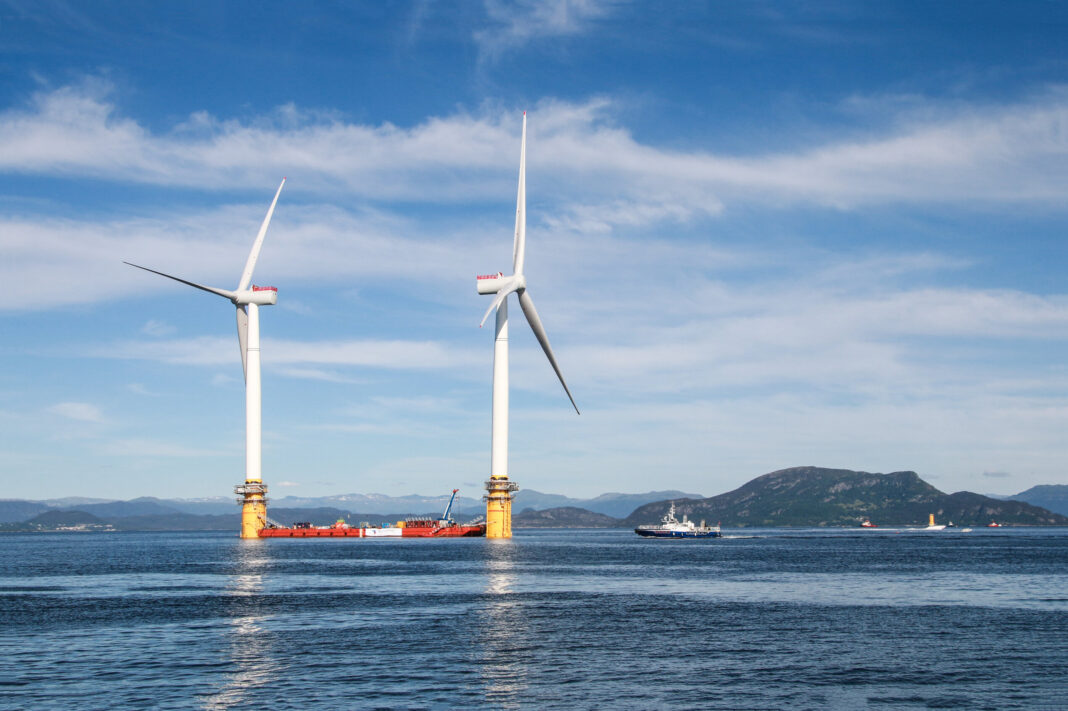
(Terje Aase, Shutterstock)
THE firm which brought the world’s first floating wind farm to Scotland has revealed that the facility has reached the highest average capacity factor of any wind farm in the UK.
Located 29 kilometres off Peterhead, Hywind Scotland has had an average capacity factor of 57.1% over the last 12 months – setting a new record in the UK. During its first two years of operation, it had an average capacity of 54%.
Capacity factor is the ratio of actual energy output over a given period of time to the maximum possible output – a higher capacity factor means lower intermittency and higher value. Equinor, the Norwegian firm behind Hywind Scotland, said the average UK capacity factor stands at 40%.
It added that the performance shows the potential of floating wind farms. Last year (2020) Boris Johnson announced plans for the creation of several floating wind farms across the UK as part of a £160 million investment. Equinor said that £33.6 billion of gross value added and up to 17,000 jobs created by 2050, if the UK embraces floating wind farms.
Sonja Chirico Indrebø, plant manager for Hywind Scotland, commented, “In Equinor we are constantly striving to improve the performance of our assets, whilst ensuring we extract learnings to support future projects. The turbines on Hywind Scotland are covered in sensors, to extract as much data from the wind farm as possible. We’re monitoring everything from ballast, mooring, structural strains and the more regular wind turbine sensor data, looking at how best to optimise this innovative technology as we prepare to develop at scale. We’re sharing parts of this data across industry to help the advancement of the technology globally and more widely than just our own operations.”
Sebastian Bringsværd, head of floating wind development at Equinor, added, “It’s great to see the results Hywind Scotland and the floating technology keeps delivering. The potential for floating offshore wind is huge. With access to deeper waters and therefore higher and more consistent wind speeds, floating offshore is not only an efficient way to generate electricity from wind, this exciting technology can also provide jobs and value creation for the countries supportive of floating. In the UK alone, we are talking at least 17000 jobs and £33bn GVA by 2050. We believe Scotland has the potential to build a globally competitive offshore wind industry, including a real chance to enhance the development of floating offshore wind.”








